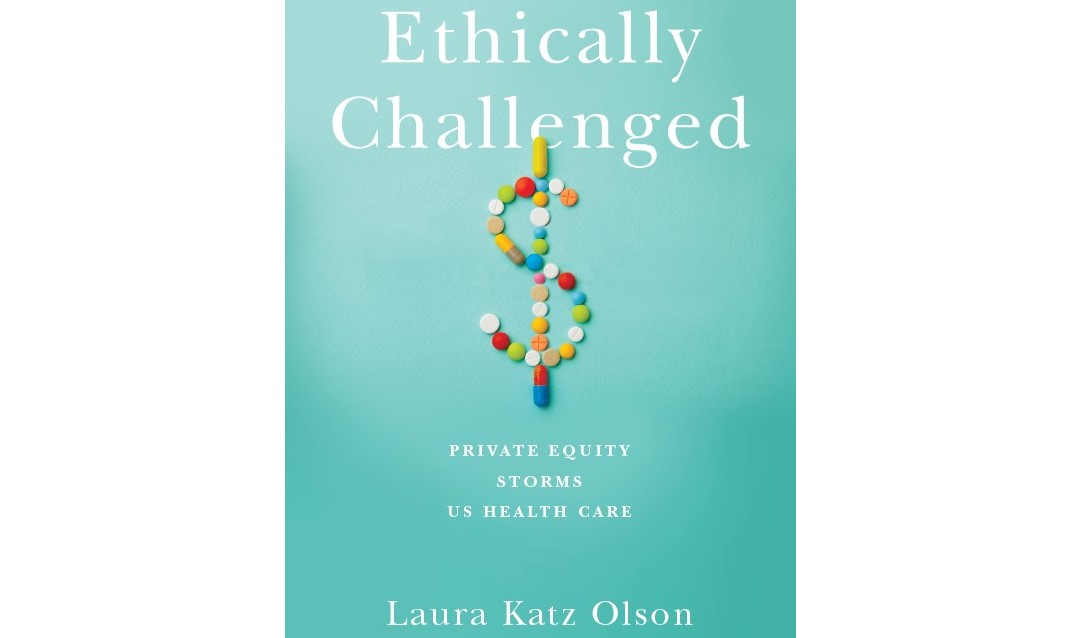“Private equity is taking over eating disorder enterprises, hospital emergency rooms, autism treatment facilities, dialysis centers,” says Laura Katz Olson, distinguished professor of political science at Lehigh.
“If you are addicted to opioids, don’t be surprised if private equity is your treatment center, or if it owns the ambulance or helicopter picking you up at a crash site,” she adds.
Olson has authored the first book that addresses private equity’s infiltration of U.S. healthcare. “Ethically Challenged: Private Equity Storms U.S. Healthcare” (Johns Hopkins University Press March 8, 2022) sheds light on the industry’s growing involvement in the healthcare sector.
Olson details how private equity firms, which are investment management companies that provide financial backing to private ventures, are “gobbling up” such essential services as physician and dental practices; home care and hospice agencies; substance abuse, eating disorders and autism services; urgent care facilities, and emergency medical transportation.
The consequences for healthcare businesses, patients, taxpayers and society at large, she says, are devastating.
“Despite private equity’s claims of greater efficiency and cost-effectiveness, its steady takeover of healthcare has led to lean and inadequate services, worse patient outcomes, less transparency, fewer choices for consumers, monopolies, and higher medical fees,” says Olson.
The private equity industry is notorious for its secrecy, she says. Still, it’s no secret how well the industry is doing, financially. According to Pitchbook, a software provider for private equity firms, the “Big Four” private equity firms enjoyed “record-breaking” earnings in 2021. In “Ethically Challenged,” Olson examines the dynamics that make such astronomical earnings growth possible.
Private equity firms make money by purchasing flourishing companies cutting their operating costs, mostly to the detriment of patient care, then reselling them in short order. Exorbitant fees charged to the acquired businesses themselves make up a good portion of private equity firms’ earnings.
In fact, private equity’s toolkit, says Olson, relies on piling up massive debt on its investment targets and requiring them to pay it off.
“The goal is to squeeze as much money as possible out of its purchases and enhance their value for resale,” says Olson. “Through financial wizardry, along with assorted fees and dividends charged to the portfolio companies, private equity has generated the most lucrative Wall Street enterprise in the U.S., and indeed the world, that is propped up mostly by public pension assets.”
Public pension funds―or, investments made with money contributed by individuals and state and local governments to provide retirement funds for public sector employees―make up the dominant portion of equity for private equity buyouts, according to a 2020 Institutional Investor article, “The World’s Dominant Investors in Private Equity.”
“These pension funds tend to ignore the inconvenient fact that their money may be undermining the very health care system their workers and retirees rely on,” says Olson.
Olson explores the exploding growth of private equity’s investment in healthcare businesses in specific sectors and the factors that are propelling the industry’s focus on those sectors.
Specialized physician practices, she says, are particularly attractive to private equity for their “steady revenue flow.” Olson reports that among the specialties receiving heightened interest are: dermatology, ophthalmology, orthopedics, gastroenterology, urology, dialysis facilities, fertility clinics, urgent care centers and medical staff outsourcing.
She further examine private equity’s investments in the following sectors:
- Dental Services Organizations: Olson details “the history of the early buyouts, and exposes the adverse effect on patients, such as providing needless procedures and substandard treatments.” She argues that “...Medicaid-funded care of children became a major target for private equity, profiting the financial buyers at the expense of low-income kids.”
- Home care and hospice agencies: Olson examines the extent to which private equity owners “...exploit the Medicare-supported [hospice] benefit that is intended to allow the terminally ill to die as peacefully as possible.”
- Substance abuse rehabilitation centers: The book investigates a few places that she says “...are taking advantage of the opioid crisis and enhanced federal funding to combat it.”
- Eating disorder clinics: Olson demonstrates how private equity firms “...have reaped financial gain at the expense of their food-challenged, largely female patients.”
- Autism spectrum disorder (ASD) treatment facilities: She looks at “…the large disparity between the gains of private equity owners and the adverse impact on the ASD children they serve.”
- Medical transportation companies: Olson details the “human cost” of private equity ownership including “...worse response times, less supplies on hand and more aggressive billing practices than other private or government providers.”
Olson points to public pension funds, founder-owners, insurance companies and big banks as some of the parties most “complicit” in supporting private equity’s “hijacking of our health entities.” But, she says, government policies and a lack of accountability are the most to blame. Olson notes that there is a “revolving door” between private equity and top government positions that, she says, ensures a friendly political environment in which the industry can thrive.
She calls for federal and state governments to curb the spread of the private equity industry in health care through regulations, changes to tax laws that enable their maneuvering and by providing more social services instead of subsidizing private sector solutions to social challenges.
Olson says: “Unless political leaders stop them, private equity firms have no intention of curtailing their ever-growing consolidation of U.S. health and medical services.”


